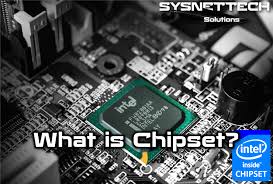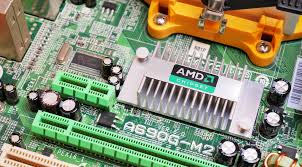In the ever – evolving world of technology, the chipset stands as a cornerstone of modern computing and electronic devices. A chipset is a group of integrated circuits designed to work together, managing the flow of data between the processor, memory, and other components of a computer or electronic device. This article will explore the intricacies of chipsets, including their types, functions, applications, and future trends.
What is a Chipset?

A chipset is essentially the “traffic cop” of a device. It coordinates and controls the communication between different hardware components, ensuring that data is transferred efficiently and accurately. It consists of two main parts: the northbridge and the southbridge (in traditional desktop computer architectures). The northbridge is responsible for high – speed communication with the processor, memory, and graphics card, while the southbridge manages slower – speed devices such as USB ports, hard drives, and audio interfaces.
| Component | Function |
|---|---|
| Northbridge | Manages high – speed data transfer between the CPU, memory, and graphics |
| Southbridge | Handles communication with slower peripheral devices |
Types of Chipsets

There are several types of chipsets, each designed for specific applications and device types.
Desktop Chipsets
Desktop chipsets are optimized for desktop computers. They offer high – performance capabilities, supporting multiple cores, high – speed memory, and advanced graphics. For example, Intel’s Z – series chipsets are popular among gamers and enthusiasts for their overclocking capabilities, allowing users to push the performance of their processors beyond the default settings.
Laptop Chipsets
Laptop chipsets are designed with power efficiency in mind. They need to balance performance with battery life, as laptops rely on a limited power source. AMD’s Ryzen Mobile chipsets, for instance, offer a good combination of processing power and energy efficiency, making them suitable for a wide range of laptop applications.
Mobile Chipsets
Mobile chipsets are used in smartphones and tablets. They are highly integrated, combining the CPU, GPU, modem, and other components into a single package. Qualcomm’s Snapdragon chipsets are widely used in Android devices, offering excellent performance, graphics capabilities, and connectivity options such as 5G support.
| Chipset Type | Application | Key Features |
|---|---|---|
| Desktop | Desktop computers | High – performance, overclocking support |
| Laptop | Laptops | Power efficiency, balanced performance |
| Mobile | Smartphones and tablets | High integration, 5G support |
Functions of a Chipset
The primary functions of a chipset include:
- Data Transfer Management: It ensures that data can flow smoothly between different components. For example, when a user opens a file from the hard drive, the chipset coordinates the transfer of data from the hard drive to the memory and then to the processor for processing.
- Component Compatibility: The chipset ensures that all the hardware components in a device are compatible with each other. It provides the necessary interfaces and protocols for different devices to communicate effectively.
- Power Management: In devices like laptops and mobile phones, the chipset plays a crucial role in managing power consumption. It can adjust the power supply to different components based on their usage, helping to extend battery life.
Applications of Chipsets
Chipsets are used in a wide variety of applications, from consumer electronics to industrial and automotive systems.
Consumer Electronics
In consumer electronics, chipsets are found in smartphones, tablets, laptops, and desktop computers. They enable these devices to perform complex tasks such as running applications, playing games, and streaming videos. For example, Apple’s A – series chipsets power iPhones and iPads, providing a seamless user experience with high – performance computing and graphics capabilities.
Industrial Applications
In industrial settings, chipsets are used in control systems, automation equipment, and robotics. They can handle real – time data processing and control, ensuring the efficient operation of industrial processes. For instance, industrial chipsets can be used to monitor and control the temperature, pressure, and flow in a manufacturing plant.
Automotive Systems

In the automotive industry, chipsets are essential for advanced driver – assistance systems (ADAS), infotainment systems, and engine control units. They enable features such as lane – keeping assist, collision avoidance, and in – car entertainment. For example, NVIDIA’s DRIVE chipsets are used in self – driving cars to process sensor data and make real – time driving decisions.
Challenges in Chipset Development
Developing chipsets is a complex and challenging process. One of the main challenges is the increasing demand for higher performance and lower power consumption. As technology advances, users expect devices to be faster, more powerful, and have longer battery life. Chipset manufacturers need to continuously innovate to meet these demands.
Another challenge is the miniaturization of components. As chipsets become more integrated, the size of the individual components needs to be reduced. This requires advanced manufacturing processes and materials, which can be costly and technically difficult to implement.
There are also challenges related to security. With the increasing connectivity of devices, chipsets need to provide robust security features to protect against cyber threats. This includes protecting data during transmission and storage, as well as preventing unauthorized access to the device.
Future Trends in Chipset Technology
The future of chipset technology looks promising, with several emerging trends.
Artificial Intelligence Integration
Chipsets are increasingly being integrated with AI capabilities. This allows devices to perform tasks such as image recognition, natural language processing, and machine learning more efficiently. For example, some mobile chipsets now have dedicated AI processors to handle AI – related tasks, improving the overall performance of the device.
5G and Beyond Connectivity
As 5G technology becomes more widespread, chipsets will need to support higher – speed and more reliable connectivity. Future chipsets may also support 6G and other next – generation wireless technologies, enabling new applications such as smart cities and the Internet of Things (IoT).
Quantum Computing Compatibility
Although still in its early stages, quantum computing has the potential to revolutionize the field of computing. Chipset manufacturers are exploring ways to make their chipsets compatible with quantum computing systems, which could lead to significant advancements in processing power and data analysis.
Chipsets are an essential part of modern technology, enabling the smooth operation of a wide range of devices. They come in different types, each with its own set of features and applications. While there are challenges in chipset development, such as the need for higher performance, lower power consumption, and enhanced security, the future of chipset technology is bright. With emerging trends like AI integration, 5G connectivity, and quantum computing compatibility, chipsets will continue to drive innovation and shape the future of technology.
